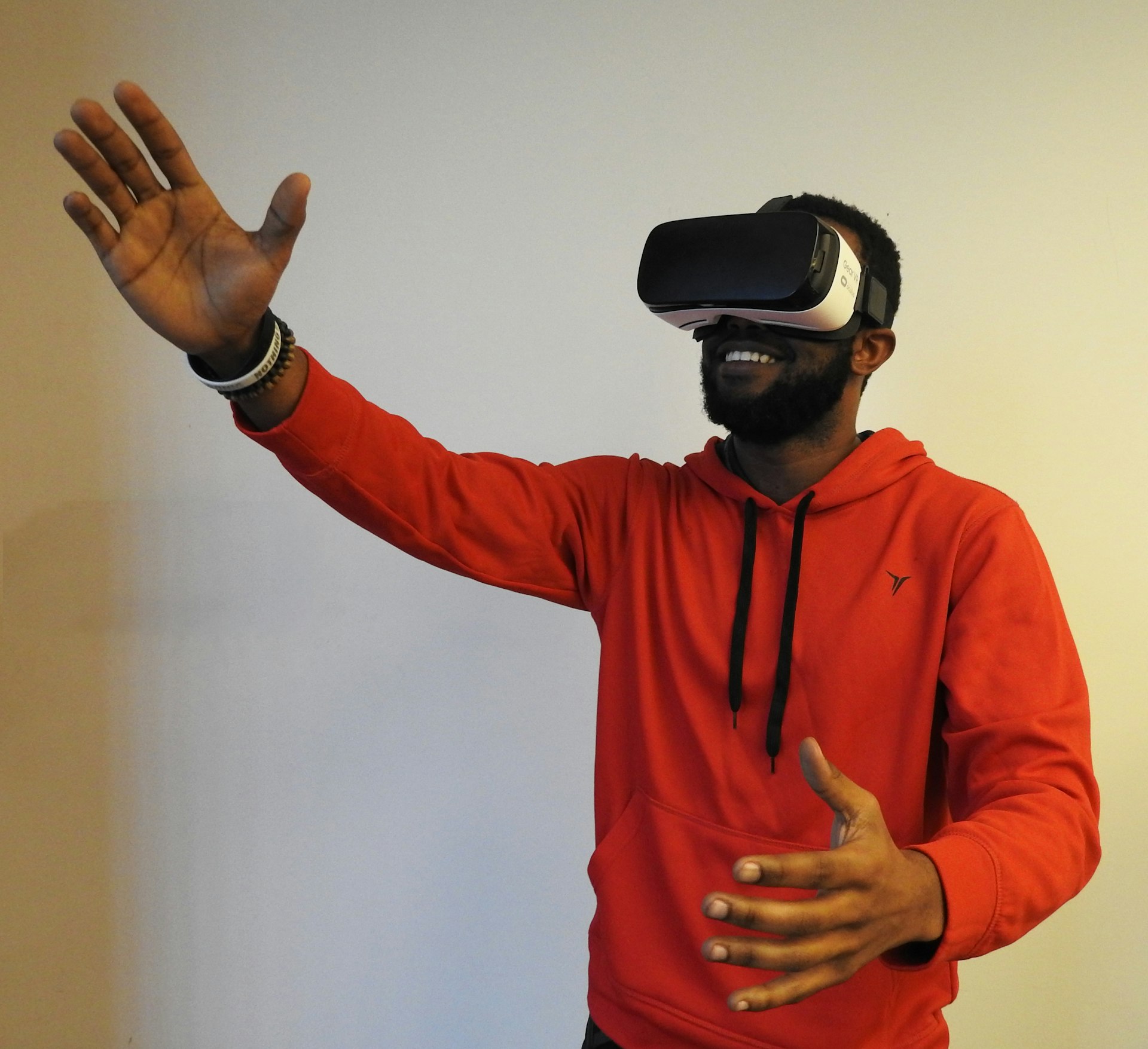Robotics Revolutionizing Elderly Care: Independence, Comfort, and Connection in 2025 and Beyond

Photo by Centre for Ageing Better on Unsplash
Introduction: The Rise of Robotics in Elderly Care
The global elderly population is growing rapidly, creating unprecedented demand for innovative care solutions. Robotics and smart technologies are emerging as powerful tools to address challenges in senior care, ranging from physical assistance to emotional support and health management. As we enter 2025 and beyond, these technologies are poised to transform how aging is experienced and supported [4] .
Physical Assistance: Enhancing Mobility and Independence
One of the most significant promises of robotics in elderly care is restoring mobility and independence . Physical assistive robots-including robotic exoskeletons and automated lifts-are helping seniors with mobility impairments regain control over daily activities. Wearable exoskeletons, such as those developed by Cyberdyne (HAL) and ReWalk Robotics, enable users to stand, walk, and move with greater ease, reducing dependence on human caregivers [2] .
Robotic caregivers like Toyota’s Human Support Robot (HSR) and RIKEN’s Robear are already being deployed in eldercare centers to assist with physically demanding tasks, such as lifting and transferring patients. These solutions not only safeguard seniors but also alleviate the strain on caregivers, especially in countries facing workforce shortages [2] .
How to Access Mobility Robotics: To explore assistive robots for mobility, consider consulting local healthcare providers, rehabilitation clinics, and senior living communities. Search for “robotic exoskeletons for seniors” or inquire about pilot programs with leading technology companies. Insurance coverage and government incentives may be available in certain regions, but eligibility and availability vary-contact your healthcare insurer or local government agency for guidance.
Emotional Support and Social Engagement: Companion Robots
Loneliness and isolation are common challenges for older adults, especially those living alone. Robotic companions , ranging from robotic pets to interactive devices, offer comfort and emotional support, helping to reduce feelings of loneliness and encourage social interaction [3] . These robots can engage in simple conversations, play games, and even remind users to take medication or attend appointments [1] .
Case studies show that companion robots boost mental stimulation and foster daily engagement. For example, robotic pets have been successfully used in memory care units to provide calming companionship and encourage interaction among residents.

Photo by Possessed Photography on Unsplash
How to Access Companion Robotics: To obtain a companion robot, consult senior care technology retailers or ask your local senior center about demonstration programs. Major brands like Paro, Joy for All, and others offer a variety of products. Before purchasing, review product features, compatibility, and support services. Funding options may be available through some social services or nonprofit organizations. If you’re unsure where to start, search online for “companion robots for seniors” and compare reviews and offerings from established companies.
Cognitive Health: Promoting Wellness and Preventing Decline
Brain health is a growing focus in AgeTech. Robotics and related digital tools now enable seniors to monitor cognitive wellness, participate in gamified cognitive training, and track brain activity through wearable gadgets [3] . These innovations help delay cognitive decline by encouraging regular mental exercise and providing actionable insights for users and caregivers.
Popular solutions include cognitive training apps that integrate with smart devices, as well as wearable sensors that track sleep, stress levels, and other indicators of cognitive health. These systems can alert caregivers to potential risks, such as fall hazards or changing patterns in behavior.
How to Access Cognitive Health Tools: Start by searching for “brain training apps for seniors” or “wearable cognitive health monitors.” Many devices are available through electronics retailers or specialty medical suppliers. Consult with your healthcare provider to determine which options best suit your needs and to learn about integration with existing telehealth platforms.
Smart Homes and Integrated Healthcare
The concept of smart homes is rapidly gaining traction in senior living communities. Devices like voice-activated assistants (Amazon Alexa, Google Assistant), smart thermostats, and automated lighting systems help seniors manage daily tasks, maintain comfort, and improve safety [5] . Wearable health trackers (Fitbit, Apple Watch) further enhance monitoring, providing real-time data on vital signs and activities, and can even detect falls.
Telemedicine and virtual healthcare are also becoming routine, allowing seniors to access healthcare providers remotely. This reduces the need for travel and enables timely interventions. Many providers now offer remote consultations, mental health counseling, and specialist visits through secure platforms.
How to Access Smart Home and Telemedicine Services: To implement smart home technologies, consult technology retailers about compatible devices and installation services. For telemedicine access, contact your healthcare provider or insurer to learn about available virtual care options. Many senior living communities are integrating these solutions, so ask about technology offerings when considering a new residence.
Privacy, Autonomy, and Ethical Considerations
While robotics promise substantial benefits, they also raise important questions about privacy, autonomy, and data security. AI-driven robots often rely on behavioral tracking and voice technologies, which can collect sensitive information [4] . Seniors and caregivers should carefully review privacy policies, data handling practices, and user controls before adopting new systems.
Step-by-Step Guidance:
- Ask providers for detailed privacy and security documentation
- Request demonstrations or trials before purchase
- Consult with legal or advocacy organizations about best practices for protecting senior rights
If unsure, reach out to your local Area Agency on Aging or national advocacy groups for guidance on evaluating technology solutions.
Implementation Steps and Alternative Pathways
To adopt robotics in elderly care, follow these steps:
- Assess individual needs, preferences, and living environment
- Consult healthcare professionals or occupational therapists for recommendations
- Research products and services from reputable technology companies
- Inquire about trial programs, pilot projects, or demonstrations at local senior centers
- Explore funding options through insurance, government incentives, or nonprofit organizations
- Review privacy, support, and warranty policies before purchase
- Plan for ongoing training and support to maximize benefits
Alternative approaches include leveraging traditional caregiver support, community resources, and low-tech solutions for those who may prefer less technological intervention.
Challenges and Solutions
Despite the promise of robotics in eldercare, challenges persist. Common obstacles include cost, technology adoption barriers, and regulatory uncertainty. Many seniors face difficulty engaging with new devices due to unfamiliarity or physical limitations [1] .
Potential Solutions: Ongoing training, user-friendly interfaces, and support from caregivers and family members can ease the transition. Advocates recommend starting with simple devices and gradually increasing the complexity of technology as confidence grows. Governments and industry organizations are working to promote barrier-free access and provide incentives for technology adoption [2] .
Key Takeaways
Robotics and smart technologies are transforming senior care by enhancing mobility, emotional wellbeing, cognitive health, and daily living. To access these innovations, seniors and caregivers should:
- Consult healthcare providers and local agencies for recommendations
- Research products and services from established brands
- Participate in demonstration programs and pilot projects
- Review privacy and support policies carefully
- Utilize available funding and incentives when possible
For more information on technology adoption in senior care, you can contact your local Area Agency on Aging, healthcare provider, or senior living community. Consider searching for “robotics for senior care,” “smart home technology for seniors,” or “telemedicine for elderly” to find the latest offerings and guidance.
References
- [1] MyCareConcierge (2025). How Technology will Transform Senior Care in 2025.
- [2] Future Market Insights (2025). Eldercare Assistive Robots Market Size, Trends 2025-2035.
- [3] Cyces (2025). AgeTech Trends 2025: AI, Robotics & the Future of Aging.
- [4] ROJournals (2025). AI-Driven Robots for Elderly Care: Enhancing Quality of Life.
- [5] HBR Home Care (2025). The Future of Senior Living: Trends to Watch in 2025.
MORE FROM cheerdeal.com













